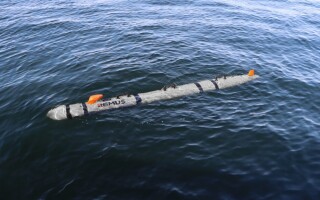Lockheed Martin launches exoskeleton solution with newly licensed bionic augmentation tech
NewsMay 18, 2017

TAMPA, Fla. Lockheed Martin officials released a new exoskeleton solution. Using licensed Dermoskeleton bionic augmentation technology, the FORTIS Knee Stress Release Device (K-SRD)TM is a computer-controlled exoskeleton that counteracts overstress on the lower back and legs and increases mobility and load-carrying capability.
Lockheed Martin recently licensed B-Temia's bionic augmentation technology. B-Temia developed Dermoskeleton as the basis for computer-controlled devices that can increase mobility and load-carrying capacity by counteracting overstress on the lower back and legs.
The FORTIS boosts leg capacity for physically demanding tasks that require repetitive or continuous kneeling or squatting, or lifting, dragging, carrying, or climbing with heavy loads. "For any mission that combines heavy man-portable gear and climbing, FORTIS K-SRD can enhance strength and endurance," Keith Maxwell, FORTIS program manager at Lockheed Martin Missiles and Fire Control, says.
"FORTIS K-SRD features military-specification batteries that are approved for infantry use, improved control box ergonomics and faster actuators that generate more torque," Maxwell adds. "These system upgrades resulted from soldier feedback on the initial design."
Sensors on the exoskeleton report the soldier's speed, direction and angle of movement to an on-board computer that drives electro-mechanical actuators at the knees. The exoskeleton delivers the right torque at the right time to assist knee flex and extension. FORTIS K-SRD ultimately reduces the energy needed to cross terrain, squat or kneel.





